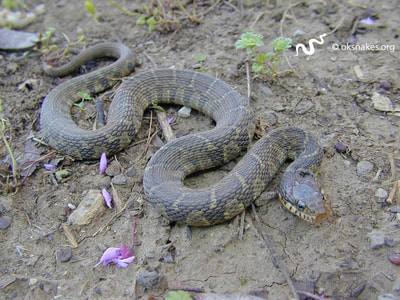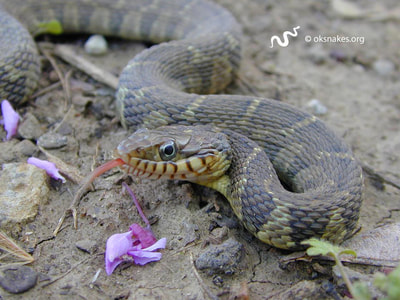Plain-bellied watersnake
Nerodia erythrogaster
Nerodia erythrogaster
HARMLESS
Description:
This snake has an obvious pattern when it is younger and can darken with age. The belly is yellow and there are dark markings on the outer edges of each belly scale. The scales are heavily keeled, and the anal plate is divided.
Size:
Adults 30 - 48 inches (76 - 122 cm)
Prey:
Fish, frogs, tadpoles, and salamanders
Reproduction:
Mates April to June. Females give birth to 5 - 25 babies in late summer and they are 7 - 12 inches (10 - 13 cm) long.
Habitat:
Ponds, lakes, streams, rivers, wetland areas, and virtually any permanent body of water
Other Information:
Often confused with the venomous cottonmouth, this harmless snake is commonly seen basking on logs and rocks near water. When threatened it may emit a foul-smelling musk or even attempt to bite.
Why doesn't the range map show this species in my county?
Description:
This snake has an obvious pattern when it is younger and can darken with age. The belly is yellow and there are dark markings on the outer edges of each belly scale. The scales are heavily keeled, and the anal plate is divided.
Size:
Adults 30 - 48 inches (76 - 122 cm)
Prey:
Fish, frogs, tadpoles, and salamanders
Reproduction:
Mates April to June. Females give birth to 5 - 25 babies in late summer and they are 7 - 12 inches (10 - 13 cm) long.
Habitat:
Ponds, lakes, streams, rivers, wetland areas, and virtually any permanent body of water
Other Information:
Often confused with the venomous cottonmouth, this harmless snake is commonly seen basking on logs and rocks near water. When threatened it may emit a foul-smelling musk or even attempt to bite.
Why doesn't the range map show this species in my county?




